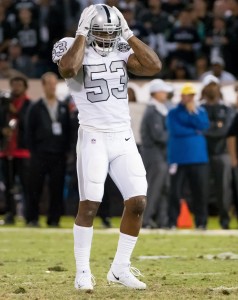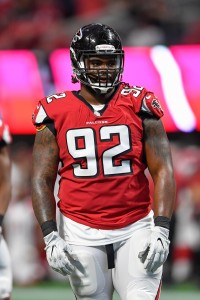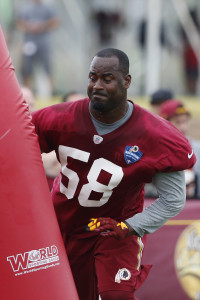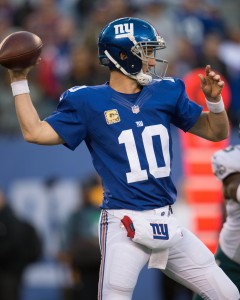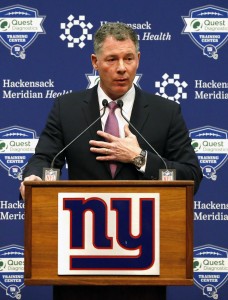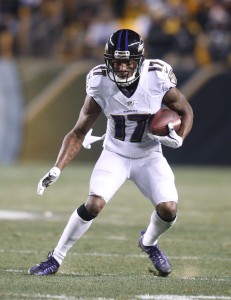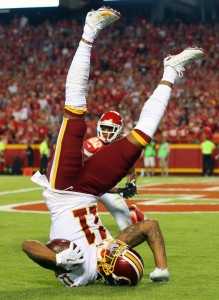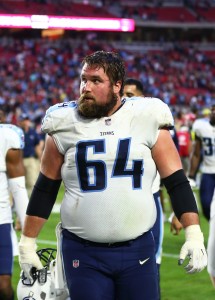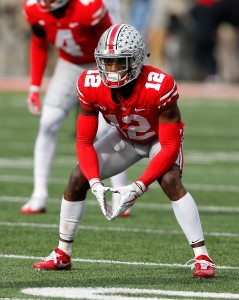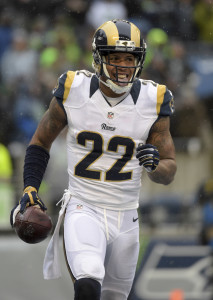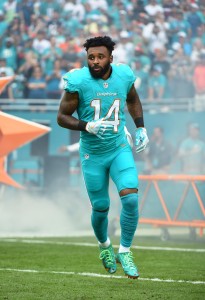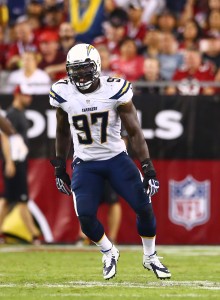In advance of March 14, the start of free agency in the NFL, Pro Football Rumors will detail each team’s three most glaring roster issues. We’ll continue this year’s series with the Denver Broncos, who slunk out of the playoff picture midway through the 2017 season en route to a 5-11 campaign.
Pending Free Agents:
- Zaire Anderson, LB (ERFA)
- Allen Barbre, G
- Shaquil Barrett, LB (RFA)
- Jamaal Charles, RB
- Jared Crick, DE
- Todd Davis, LB
- Bennie Fowler, WR (RFA)
- Jerrol Garcia-Williams, LB (ERFA)
- Virgil Green, TE
- Shelby Harris, DE (ERFA)
- Joseph Jones, LB (ERFA)
- Casey Kreiter, LS (ERFA)
- Cody Latimer, WR
- Corey Nelson, LB
- Brock Osweiler, QB
- Matt Paradis, C (RFA)
- Donald Stephenson, T
- Jordan Taylor, WR (ERFA)
- Billy Turner, G
- Elijah Wilkinson, T (ERFA)
- Billy Winn, DE
Top 10 Cap Hits for 2018:
- Von Miller, LB: $22,500,000
- Demaryius Thomas, WR: $12,033,333
- Aqib Talib, CB: $12,000,000
- Emmanuel Sanders, WR: $10,937,500
- Derek Wolfe, DE: $10,925,000
- Chris Harris, CB: $10,366,666
- Ronald Leary, G: $8,796,875
- Bradley Roby, CB: $8,526,000
- Menelik Watson, T: $7,458,333
- Brandon Marshall, LB: $7,000,000
Other:
- Projected cap space (via Over the Cap): $26,965,120
- Fifth pick in draft
- Must exercise or decline 2019 fifth-year option for LB Shane Ray
Three Needs:
1) Decide which path they’ll take to quarterback upgrade: The 2016 Broncos did not display much in the way of rushing offense, rushing defense, or pass offense. They rode a historically dominant pass defense to a 9-7 record. A year later, Denver managed to fix its ground problems, rising from 28th to fifth in run defense and 27th to 12th in rush offense, but it ended up mattering little thanks to what took place under center. Often abysmal quarterback play doomed the Broncos, and their offseason will be centered around addressing that.
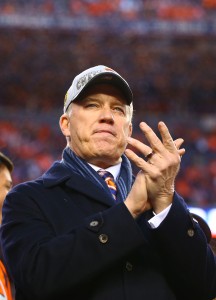 However, the Broncos have two disparate routes they could take to upgrade here. Their situation dictates they will have to make a decision earlier than most quarterback-needy teams have in recent memory.
However, the Broncos have two disparate routes they could take to upgrade here. Their situation dictates they will have to make a decision earlier than most quarterback-needy teams have in recent memory.
Thanks to a quarterback market that dwarfs just about anything the NFL’s seen since Peyton Manning‘s 2012 free agency tour, the Broncos don’t figure to have the luxury of prospects’ pro days or pre-draft visits to judge incoming rookies. Since the legal tampering period begins March 12, the Broncos — if they are to explore adding a veteran to align with their experienced defense and wideout duo — may have to choose their avenue after the Combine.
Now that historic circumstances will send Kirk Cousins to the market, landing him will probably be Denver’s primary goal. Shifting focus to the rookie circuit will presumably only come as a result of Cousins deciding to sign elsewhere.
While it’s a good year to need a quarterback, with starter-level veterans available and a rookie class that could see four passers go off the board in the top 10, whatever direction the Broncos choose will have critical ramifications for themselves and some other teams in this complex quarterback market.
It would make financial sense if the Broncos targeted a rookie. Before any Aqib Talib action is taken, Denver is in the middle of the cap-space pack. Shedding only Talib’s deal (and saving $11MM) might not be sufficient in a Cousins pursuit. They may need to consider removing at least one more veteran contract from the payroll. C.J. Anderson, Derek Wolfe, Emmanuel Sanders or even Demaryius Thomas qualify here.
That said, their QB sales pitch is a veteran-heavy roster filled with championship experience. Cutting into it too much would defeat the purpose of adding a passer.
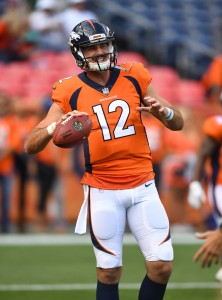 However, the Broncos’ past decision to go in the amateur direction burned them. Paxton Lynch‘s lack of development placed them in this predicament.
However, the Broncos’ past decision to go in the amateur direction burned them. Paxton Lynch‘s lack of development placed them in this predicament.
While a rookie would be a better financial fit, it might behoove the Broncos to go for experience this time considering the ages of said championship nucleus. Von Miller (29 in March), Chris Harris (29 in June), Brandon Marshall (29 in September) and Wolfe (28 in February) will all be in their 20s next season, but it will be the last season the bulk of the remaining Super Bowl 50 core will be south of 30. Sanders will turn 31 in March, and Thomas recently turned 30.
The best players currently on the Broncos are not ascending talents, and they have seen poor quarterback play drain some of their primes. A veteran would make more sense for this group’s contention window.
Cousins’ price could well be north of Matthew Stafford‘s $27MM-AAV pact and thus nearly $10MM more per year than the Broncos have ever paid a quarterback. Manning cost $19MM annually. Operating without a franchise-quarterback salary allowed the Broncos to extend role cogs like Marshall, Wolfe, Sanders and Darian Stewart. That math changes if Cousins or a lesser veteran option is acquired.
But the Broncos have seen the results when a proven player is not taking snaps for them and may be ready to stomach the price. Cousins agreeing to a Denver pact could reopen the Broncos’ contention window in 2018. It’s uncertain if any other veteran or rookie passer would be capable of that, illustrating the stakes of what promises to be a momentous competition for the soon-to-be-available passer.
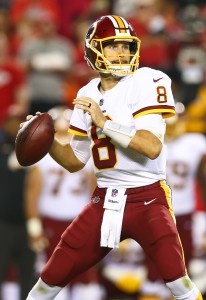 A top-tier contract will be required for Cousins — a good, not great, passer. But an argument could be made the Broncos would be the AFC West favorites and one of the conference’s best teams with a good, not great, passer. The soon-to-be 30-year-old will have other suitors — like the Jets, Cardinals, Bills, or Jaguars, if they reverse course and move on from Blake Bortles — driving up his price. That would eat into Denver’s funds for other positions of need.
A top-tier contract will be required for Cousins — a good, not great, passer. But an argument could be made the Broncos would be the AFC West favorites and one of the conference’s best teams with a good, not great, passer. The soon-to-be 30-year-old will have other suitors — like the Jets, Cardinals, Bills, or Jaguars, if they reverse course and move on from Blake Bortles — driving up his price. That would eat into Denver’s funds for other positions of need.
With Cousins detailing how critical a winning situation is to his decision, the Broncos may have a leg up on most of the competition. The Browns and Jets will hold far more cap space, but would Cousins — who’s banked $44MM-plus the past two seasons — take a slight discount if it meant latching on with a team in a better position to compete?
If it’s not Cousins the Broncos are realistically chasing, the offseason slows down to some degree. None of the other UFA QBs (this is assuming Drew Brees, as he’s said he intends to, re-signs with the Saints) will require this kind of urgency. Mike Klis of 9News notes the Broncos would seek a stopgap passer to pair with a rookie if Cousins spurns them, and there are plenty of options for that role.
The Gary Kubiak coaching staff examined Tyrod Taylor three years ago, but he wouldn’t seem to fit as well in the current scheme. Taylor (if available, as he’s expected to be) also won’t be nearly as costly as Cousins, and the Bills’ turnover-averse passer could play into the Denver defense’s hands. A game-managerial style would protect a unit that saw turnovers (Denver was minus-17, 31st in the NFL) create wild disparity in 2017: third in total defense (290 yards per game) and 22nd in points (23.9 per game).
The Vikings will likely send two of their passers to the market, but neither Teddy Bridgewater nor Sam Bradford is a franchise-changing player at this point. Case Keenum‘s status is up in the air; he could be an option as well if not franchise-tagged. Klis even speculates about a Jay Cutler reunion, which would certainly be a strange occurrence.
None move the needle like Cousins would, but most would be upgrades in Denver. The half-measures would also allow for less cap space-clearing roster reconstruction.Read more
If the Broncos go with a veteran, Lynch could merely be shifted back to the developmental circuit. If they entrust a QB with their No. 5 overall pick, the Lynch experiment is probably over. A veteran backup would make more sense behind the rookie than Lynch, who has not inspired confidence yet (but also has only played eight halves of football).
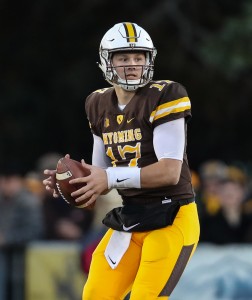 The Broncos having a younger roster may have allowed them to stay the course with their 2016 first-rounder for another season, but their veteran core has induced a vast manhunt.
The Broncos having a younger roster may have allowed them to stay the course with their 2016 first-rounder for another season, but their veteran core has induced a vast manhunt.
The draft route would be interesting. Denver’s only held two top-five picks in the past 26 years, the other bringing Miller in 2011, and choosing a quarterback would deprive the Broncos of a surefire starter elsewhere. Players like Quenton Nelson (Lance Zierlein of NFL.com’s Broncos mock pick), Roquan Smith or Minkah Fitzpatrick would either be instant starters or Day 1 contributors and strengthen the Broncos’ playoff chances.
However, as the Giants are also experiencing, a rare pick this high coming in a year where a quarterback is needed would be a difficult proposition to pass up. A Cousins acquisition would make the Broncos forget about rookie QBs, but are the other UFAs good enough to bypass a chance at picking a cost-controlled player like Josh Allen or Sam Darnold (or even Baker Mayfield) at 5?
If Cousins signs elsewhere, the Broncos may well wait for the draft, and Denver’s March choice will help shape the draft.
John Elway took a high-ceiling, low-floor player like Allen — whose bowl game he trekked to in December — before in Lynch, only the Wyoming talent’s ceiling has been labeled higher. Elway having probably missed on Lynch also plays into this decision, since another misstep could play a role in defining his GM legacy. And what happens if a player most don’t expect to make it to No. 5 — like Darnold or Josh Rosen, whom the Broncos would reportedly take at 5 if he were expected to be there — ends up available after the Broncos chose the free agency route?
The Broncos’ decision come March will be a seminal moment, but whether it’s addressed in March or April, Denver will have a new quarterback expected to start in 2018.
2) Figure out their pass-catcher situation: There are some moving parts here. If the Broncos are keen on attracting a UFA QB, they probably shouldn’t be too eager to move on from their Pro Bowl wideouts. But it’s not out of the question given the stakes of this offseason and what it could cost to acquire Cousins.
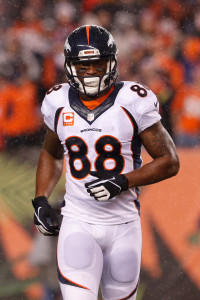 When healthy, Thomas and Sanders have been two of the team’s best players since this duo formed in 2014. And both are under contract, should the Broncos pick up Thomas’ $4MM option that buys back the next two years of his deal, through 2019. They would seemingly pair well with a free agent quarterback.
When healthy, Thomas and Sanders have been two of the team’s best players since this duo formed in 2014. And both are under contract, should the Broncos pick up Thomas’ $4MM option that buys back the next two years of his deal, through 2019. They would seemingly pair well with a free agent quarterback.
However, Sanders (47 receptions, 555 yards, two TDs) did not live up to his $9.5MM price tag this season, largely because of an ankle injury. He’s due $10.9MM in 2018. A Sanders cut would cost $5MM-plus in dead money. There are some possible replacements on the wideout market, should the Broncos seek a younger alternative for their No. 2 receiver.
However, a key issue for the Broncos since Julius Thomas and Wes Welker‘s 2014 injuries has been auxiliary support for their standout receivers. That’s forced Thomas and Sanders to shoulder a heavy load the past three seasons, and it’s limited the offense schematically.
Denver has tried to fill these spots with draft picks (Cody Latimer and Carlos Henderson), low-level UFAs (Jordan Norwood) and UDFAs (Bennie Fowler and Jordan Taylor) and has continually received little from this group. Now that their starters are on the back ends of their primes, it’s time for the franchise to get serious about development here.
And aside from some sporadic Owen Daniels production, most notably the 2015 AFC title game, Denver’s tight ends have not shown much over the past three seasons.
Virgil Green has been useful as a blocker, but he’s now a free agent. Jeff Heuerman has not yet lived up to the promise once associated with him, and Jake Butt is still recovering from his injury while at Michigan. The latter will be given another chance, since he was viewed as a possible first-round talent pre-injury, but the Broncos need to come away at least one reliable pass-catcher this offseason. Because as of now, the top weapons that would appeal to Cousins are each entering their ninth season.
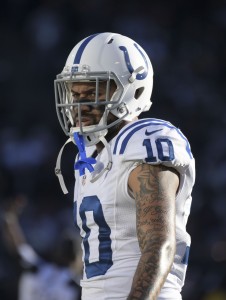 If the Broncos keep Thomas and Sanders, they probably should be ready to draft a wideout on Day 2 at the latest. Elway tried to address this with Latimer in the 2014 second round, but the raw talent never blossomed beyond his special teams-gunning work in Denver. If they’re to move on from Sanders, players like Marqise Lee, John Brown, Donte Moncrief or Jordan Matthews are some of the younger WR2 hopefuls available. None appears to have a WR1 ceiling and would thus represent a supplemental stopgap.
If the Broncos keep Thomas and Sanders, they probably should be ready to draft a wideout on Day 2 at the latest. Elway tried to address this with Latimer in the 2014 second round, but the raw talent never blossomed beyond his special teams-gunning work in Denver. If they’re to move on from Sanders, players like Marqise Lee, John Brown, Donte Moncrief or Jordan Matthews are some of the younger WR2 hopefuls available. None appears to have a WR1 ceiling and would thus represent a supplemental stopgap.
If Sanders and Thomas are both back, money here would be tight and the draft would seem the logical avenue. That said, cheaper options like Dontrelle Inman, Kamar Aiken or Albert Wilson are available as No. 3 targets in case the team felt it necessary to add a younger veteran to this core.
The Vance Joseph regime still obviously hopes Henderson can develop after a lost year, but if the team wanted to restock in Round 2 or 3, recent wideouts have obviously shown plug-and-play talent exists in these rounds.
As for this year’s crop, Texas A&M’s Christian Kirk (three years of 70-plus catches and 900-plus receiving yards) could be there at No. 37. As could James Washington (Oklahoma State) or Dante Pettis (Washington). Another Clemson talent in Deon Cain profiles as a Day 2 choice. Washington was a statistical monster the past two years, totaling 145 receptions, 2,929 yards and 23 air scores — both years averaging north of 19 yards per catch — in that span.
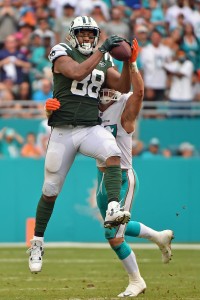 The Broncos probably won’t use a high pick on a tight end after selecting Butt last year, but they could well target a player in free agency as more of a placeholder or as Butt insurance. Heuerman is under contract for one more season but has just 18 career catches for 283 yards to show for Denver’s third-round investment in 2015. Green could be brought back, but that doesn’t solve any receiving issues.
The Broncos probably won’t use a high pick on a tight end after selecting Butt last year, but they could well target a player in free agency as more of a placeholder or as Butt insurance. Heuerman is under contract for one more season but has just 18 career catches for 283 yards to show for Denver’s third-round investment in 2015. Green could be brought back, but that doesn’t solve any receiving issues.
Tyler Eifert represents a boom-or-bust player here, and considering the Broncos already have one of those at tight end, they may opt for a safer (and cheaper) pick. Eifert’s upside is tantalizing, however, despite his rampant injury troubles. The Jets want to bring back Austin Seferian-Jenkins, but he could be a UFA option. Eagles backup Trey Burton‘s generated some buzz as well.
Either way, the Broncos need another player to take pressure off their starting wideouts. That hurt Trevor Siemian‘s development and made Denver’s offense easier to prepare for in recent years.
3) Fix latest right tackle mistake: Having made the playoffs five times in the 2010s, winning two AFC titles and one Super Bowl championship, the Broncos have accomplished more than most teams in recent years. But they’ve made frequent mistakes at this particular position.
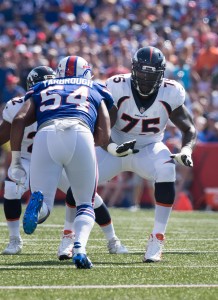 After moving Orlando Franklin to guard to start the 2014 season, the franchise has trotted out a slew of unproductive right tackles. Louis Vasquez‘s emergency pilgrimage from right guard in 2014 qualifies as the best work any of the cogs delivered during this span. Denver’s tried free agency (Donald Stephenson and Menelik Watson) and the draft (Michael Schofield and Ty Sambrailo) and failed at every turn.
After moving Orlando Franklin to guard to start the 2014 season, the franchise has trotted out a slew of unproductive right tackles. Louis Vasquez‘s emergency pilgrimage from right guard in 2014 qualifies as the best work any of the cogs delivered during this span. Denver’s tried free agency (Donald Stephenson and Menelik Watson) and the draft (Michael Schofield and Ty Sambrailo) and failed at every turn.
While left guard Max Garcia could be replaced as well, that’s not as big of an issue as what Denver’s kept creating at right tackle. As a whole, Denver’s O-line is in better shape than it’s been in recent offseasons. But right tackle will be addressed again.
Watson’s ill-advised contract will cost the Broncos to shed. Injury-prone with the Raiders, the British blocker spent the second half of this season on IR but allowed the third-most sacks in the league (eight) despite playing in just seven games. Prorated through 2019, Watson’s $4MM signing bonus will cost the Broncos $2.66MM to jettison. They will save $4.5MM in doing so, so it can be expected the team will cut its losses.
Will the Broncos dive into free agency once again or try their hand in the draft (again)? Zero-for-2 on each front during this problem period, the team’s ineffectiveness here has caused periodic trouble.
The Broncos addressing their quarterback need in free agency could lend to taking the best player available at No. 5, or the team could trade the pick to a QB-seeking team. This would allow Denver to stockpile extra picks, and it could put the Broncos in range to select a tackle to pair with Garett Bolles. Notre Dame’s Mike McGlinchey, Texas’ Connor Williams and Oklahoma’s Orlando Brown are each probably going to be first-round selections.
 Each would also double as the biggest right tackle investment the team has made in many years. However, barring a trade-down scenario, it doesn’t appear likely the Broncos will use their first-rounder to address this area.
Each would also double as the biggest right tackle investment the team has made in many years. However, barring a trade-down scenario, it doesn’t appear likely the Broncos will use their first-rounder to address this area.
If the Broncos opt to again dive into free agency, there are options.
Chris Hubbard subbed in well during Marcus Gilbert‘s four-game suspension this season. The Patriots already locked up Marcus Cannon, so Cameron Fleming looks set to test the market. Nate Solder would make for an interesting solution. Solder is a Colorado native and played for the Buffaloes prior to going to the Pats in the 2011 first round. He will turn 30 in April and has missed just one game over the past two years. New England may not be keen on re-signing Solder but doesn’t have a successor lined up yet.
Of course, like there was with Denver native Calais Campbell last year, there could be a big market for Solder. But with this being a greater need than Campbell’s position was at that juncture, might the Broncos close the deal this time?
